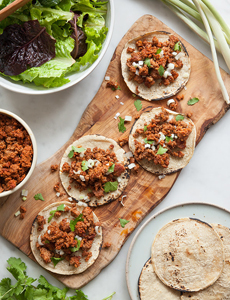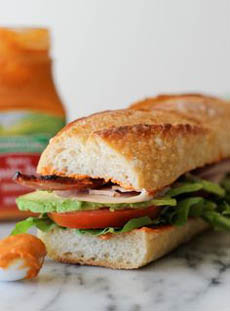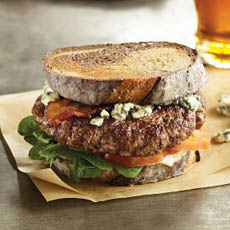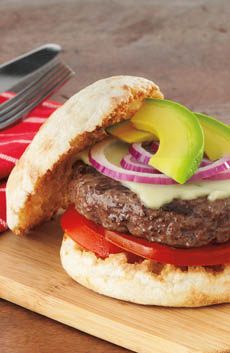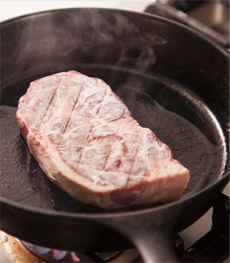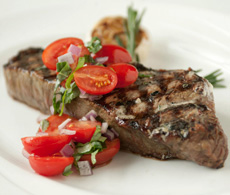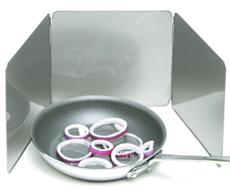


[1] Classic gujeolpan in a nine-sectioned octagonal plate (photo Jamie Frater | Wikipedia). [2] A beautiful non-traditional presentation at Siwhadam restaurant in Seoul. [3] Ingredients in the pancake (photo courtesy TheBeauti4.Blogspot.com).
|
|
For a first course or a main dish, pass the gujeolpan.
The what?
In Korea, gujeolpan (gu-JOLP-an) is the name of a sectioned serving plate that holds nine different foods: eight delicacies and a stack of crêpe-like wheat pancakes (jeon)in the center, used as wraps. The shape that purportedly resembles a flower.
Gu is Korean for nine, jeol is selection and pan is the plate. The idea is to present foods that represent different foods artistically: different textures and colors. Foods are separated by color and ingredients, and comprise various preparations of mushrooms, seasoned vegetables (bean sprouts, carrots, leeks, radishes, etc.).
Today, it’s a special-occasion dish, served at banquets and weddings, and available at restaurants that specialize in it.
HISTORY OF GUJEOLPAN
An elaborate presentation, gujeolpan is one of the most beautiful centerpiece Korean dishes, colorful and aesthetically appealing. It was once available only to nobility. Today you can have it at Korean restaurants that specialize in ancient foods (and where it can be quite pricey), or make a version of it at home with modern recipes.
The octagonal plate of yore is still used to present them; although these days any shape of platter or unsectioned dish can be used. The traditional ebony covered box can be replaced with a plastic version. There are also sectioned metal boxes, and ceramic or glass plates with depressions for the food.
Gujeolpan dates back at least to the 14th century, and has become closely associated with the Joseon kingdom that lasted from 1392 to 1897 (when the country was officially renamed the Korean Empire).
The plate can be quite elaborate, with a carvings, gold or brass embellishments and (for the very wealthy) gem encrustations.
But you can create your own, and have fun with it as an appetizer, first course or light dinner.
Might we add: It’s also a better-for-you, lower-calorie dish of fun?
HOW TO EAT GUJEOLPAN
As with Peking duck and other pancake-based Asian dishes, each person takes a pancake and fills it with the ingredients of choice. The ingredients are drizzled with sauce or other condiment, then rolled and eaten.
|
|
|
|
HOW TO MAKE GUJEOLPAN
If you have an Asian market, head there first to see what’s available. Otherwise, your produce store or supermarket will be a source of inspiration.
But you can use anything you like. It’s very easy to pickle vegetables, for example; and you need only one meat and one fish.
Create a balance of colors: brown, green, red, white, yellow. Consider:
Baby spinach, steamed and dressed with a bit of sesame oil
Bay scallops, marinated
Bean sprouts
Jeon (see note below)
Meat: lamb, pork, poultry, tofu, grilled or teriyaki, julienned
Mushrooms, marinated (we especially like enokoi and chanterelles)
Raw fish, thinly-sliced or cubed (fluke, salmon, tuna)
Salmon roe (ikura)
Seafood, raw (clams) or lightly cooked (crab, shrimp, squid, etc.)
Shredded or julienned carrots, cucumber, daikon/radish, scallions, seasonal (e.g. asparagus, ramps, sea beans), zucchini
Pickled cocktail onions, garlic, green beans or haricots verts (first cut to bite size)
Non-Traditional Items
Baby arugula or watercress
European vegetables: endive, fennel, squash, etc.
Mayo-bound salads: crab, egg, potato, tuna, etc. (small dice)
Microgreens
Grilled or roasted vegetables
Sweet gherkins
Tartare: beef, salmon, tuna
Et cetera, et cetera and so forth
Plus
Condiments on the side, e.g. chili paste, herb mayonnaise, horseradish, shredded basil, etc.
Korean mushroom and/or mustard sauces (recipes), soy sauce with vinegar
|
|
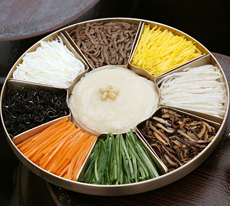
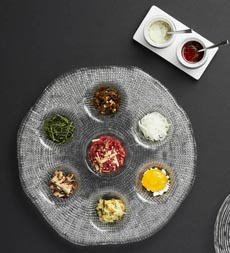
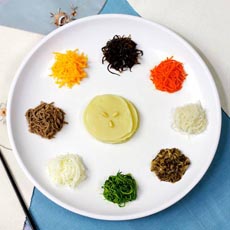
[4] A modern gujeolpan plate in metal with removable sections (photo courtesy Korea.net). [5] This plate has less than nine sections, but it works (photo courtesy Jungsik | Seoul). Or, repurpose a Passover plate. [6] You can use any plate (photo courtesy MarooDining.com.au).
|
You can serve extra dishes, and fusion dishes; for example, beets, Japanese kimchi or gourmet sauerkraut (we’re crazy about Farmhouse Culture, which makes sauerkraut in Classic Caraway, Garlic Dill, Horseradish Leek, Smoked Jalapeño and Spicy Wakame Ginger).
You can use a substitute for the pancakes (see next section).
The biggest challenge is knife skills: slicing the ingredients thinly. On the other hand, this is an opportunity to practice your knife skills.
Don’t forget the chopsticks!
MAKING THE PANCAKES
Here’s a recipe for traditional gujeolpan pancakes.
You can also substitute:
Crêpes
Mu shu pancakes (recipe)
Nori (toasted seaweed)
Wonton wrappers
Other flexible wrap
|
|
